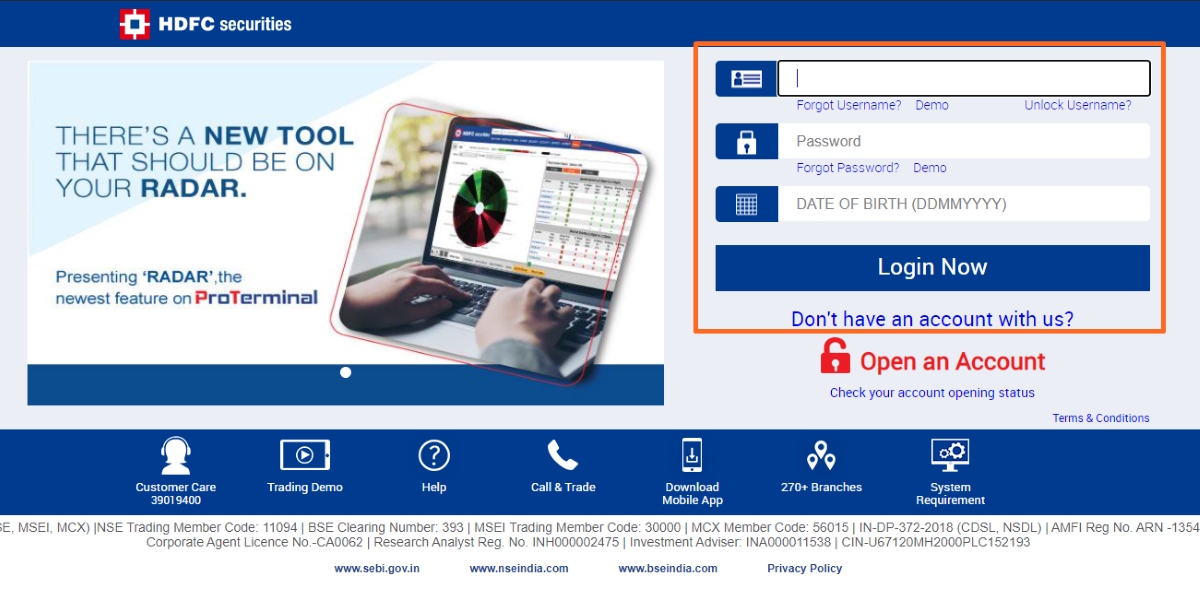Home>Finance>What Are The Company’s Capital Structure Weights On A Book Value Basis?


Finance
What Are The Company’s Capital Structure Weights On A Book Value Basis?
Modified: December 29, 2023
Find out the finance company's capital structure weights based on book value. Gain insights into the composition of their funding sources.
(Many of the links in this article redirect to a specific reviewed product. Your purchase of these products through affiliate links helps to generate commission for LiveWell, at no extra cost. Learn more)
Table of Contents
Introduction
Capital structure is a fundamental concept in finance that refers to the way a company finances its operations through a combination of debt and equity. It refers to the mix of long-term sources of funds that a company uses to support its activities, including investments in assets, acquisitions, and overall business operations.
The capital structure of a company plays a crucial role in determining its financial health, risk profile, and overall value. It represents the proportion of debt and equity used by a company to finance its assets and operations. Understanding the company’s capital structure can provide valuable insights into how it is financed and the potential risks and returns for shareholders and investors.
When analyzing a company’s capital structure, it is essential to evaluate the relative weights of debt and equity within the financial structure. These weights can be calculated based on the book value of a company’s liabilities and shareholders’ equity. This approach provides a snapshot of the company’s financial position as recorded in its accounting books.
In this article, we will delve deeper into understanding the concept of capital structure weights on a book value basis. We will explore how to calculate these weights and discuss their importance in assessing a company’s financial structure. Furthermore, we will examine the factors that influence capital structure weights and provide examples of different companies’ capital structures.
By gaining a comprehensive understanding of a company’s capital structure weights on a book value basis, investors, analysts, and financial professionals can make informed decisions when evaluating a company’s financial health and risk profile.
Understanding Capital Structure
Capital structure refers to the composition of a company’s financial resources, including its mix of debt and equity. Debt represents borrowed funds that the company must repay with interest, while equity represents the ownership stake held by shareholders. The capital structure of a company determines how it raises funds to support its business operations and investments.
The primary components of a company’s capital structure include long-term debt, such as bonds and loans, and equity, such as common stock and retained earnings. The proportion of debt and equity in the capital structure can vary depending on numerous factors, including industry dynamics, company size, growth prospects, and financial health.
A company’s capital structure has a direct impact on its financial risk and return. Debt, with its contractual obligations, increases the financial risk as the company must make regular interest and principal payments. However, it can also provide tax advantages, as interest payments are tax-deductible.
Equity, on the other hand, represents ownership in the company and does not have a fixed payment obligation. However, equity shareholders bear the potential dilution of ownership and may receive a lower return compared to debt holders.
Optimal capital structure refers to the ideal mix of debt and equity that maximizes a company’s value and minimizes its cost of capital. Achieving the optimal capital structure is a balancing act, as companies must consider the trade-off between the benefits and risks associated with debt and equity.
There are several theories and frameworks used to analyze and determine the optimal capital structure for a company. The Modigliani-Miller theorem states that, under certain assumptions, a company’s value is independent of its capital structure. However, in the real world, various factors, such as taxes, bankruptcy costs, and signaling effects, influence a company’s capital structure decisions.
Overall, a solid understanding of capital structure is essential for investors, lenders, and financial analysts to assess a company’s risk profile, financial health, and potential return. Evaluating the capital structure enables stakeholders to make informed decisions and allocate resources effectively.
Book Value Basis
When analyzing a company’s capital structure, one commonly used basis is the book value basis. The book value of a company represents the value of its assets minus its liabilities, as recorded in its financial statements. It provides a historical perspective on the company’s finances, based on historical cost accounting principles.
The book value basis calculates the capital structure weights using the book value of a company’s liabilities and shareholders’ equity. Liabilities include both short-term and long-term debt obligations that the company owes to creditors. Shareholders’ equity represents the residual interest in the assets of the company after deducting liabilities. It includes the company’s common stock, additional paid-in capital, retained earnings, and other equity components.
Calculating the capital structure weights on a book value basis involves determining the proportion of total book value represented by debt and equity. This can be done by dividing the book value of the respective component by the total book value of the company.
The book value of debt can be obtained from the company’s balance sheet, which provides information about the amount of outstanding debt and other liabilities. This includes long-term loans, bonds, and other forms of borrowing.
The book value of equity is calculated by subtracting the book value of debt from the total book value of the company. It represents the ownership interest of shareholders in the company’s assets.
By determining the capital structure weights on a book value basis, investors and analysts gain insights into how the company has financed its operations and investments over time. It provides a snapshot of the financial structure of the company, as recorded in its accounting books.
It is important to note that using the book value basis may not reflect the current market value of the company’s debt and equity. Market conditions, investor sentiment, and other factors can cause the market value to deviate from the book value. Therefore, it is crucial to consider other valuation techniques and market-based indicators when evaluating the financial structure of a company.
Overall, the book value basis provides a useful starting point for understanding the capital structure weights of a company on a historical cost basis. Combined with other financial analyses, it helps stakeholders assess the financial health, risk profile, and potential returns of the company.
Calculating Capital Structure Weights
Calculating the capital structure weights of a company involves determining the proportion of debt and equity within its financial structure. These weights can provide valuable insights into how the company is financed and the level of financial risk it carries. The capital structure weights can be calculated using various approaches, including the book value basis.
To calculate the capital structure weights on a book value basis, you need to determine the book value of debt and the book value of equity. The book value of debt is obtained from the company’s balance sheet, which provides information about the outstanding debt obligations. It includes long-term loans, bonds, and other forms of borrowing.
The book value of equity is calculated by subtracting the book value of debt from the total book value of the company. It represents the ownership interest of shareholders in the company’s assets. The total book value of the company can also be obtained from the balance sheet, where it is listed as shareholders’ equity.
Once you have the book value of debt and equity, you can calculate the capital structure weights as a percentage of the total book value. Divide the book value of debt by the total book value to calculate the debt weight. Similarly, divide the book value of equity by the total book value to calculate the equity weight.
For example, let’s say a company has a book value of debt of $500,000 and a book value of equity of $1,500,000. The total book value of the company would be $2,000,000 ($500,000 + $1,500,000). To calculate the capital structure weights, divide the book value of debt ($500,000) by the total book value ($2,000,000). In this case, the debt weight would be 25%. Similarly, divide the book value of equity ($1,500,000) by the total book value ($2,000,000) to calculate the equity weight, which would be 75%.
These capital structure weights on a book value basis provide valuable information about how the company’s financial structure is composed and the relative importance of debt and equity in its funding. They can be used to analyze the risk and return profile of the company and compare it to industry peers or benchmarks.
It is important to note that the calculation of capital structure weights is based on historical book values. Market conditions and other factors may cause the market value of debt and equity to differ from their book values. Therefore, it is crucial to consider other valuation methods and market-based indicators to gain a more comprehensive understanding of the company’s financial structure.
Importance of Capital Structure Weights
The capital structure weights of a company play a vital role in evaluating its financial health, risk profile, and overall value. These weights, which represent the proportion of debt and equity in the company’s financial structure, have several key importance:
- Assessing Financial Risk: The capital structure weights help determine the level of financial risk associated with a company. Higher debt weights indicate a higher risk as the company has a greater obligation to make regular interest and principal payments. On the other hand, higher equity weights suggest a lower risk as equity holders do not have fixed payment obligations.
- Evaluating Return Expectations: The capital structure weights can provide insights into the potential returns for shareholders and investors. A higher equity weight suggests that a greater portion of the company’s profits will flow to equity holders. In contrast, a higher debt weight may limit potential returns for equity holders due to the contractual obligations associated with debt.
- Influencing Cost of Capital: The capital structure weights affect a company’s overall cost of capital, which represents the average rate of return required by investors. The cost of debt is relatively lower than the cost of equity due to the tax deductibility of interest payments. Therefore, a higher proportion of debt in the capital structure may lower the company’s cost of capital.
- Aiding in Financial Decision-Making: Determining the capital structure weights helps companies make informed financial decisions about raising capital and financing investments. By understanding the relative weights of debt and equity, companies can evaluate the most appropriate sources of funding for their needs and optimize their financial structure.
- Comparing Performance: Capital structure weights allow for meaningful comparisons between companies within the same industry or sector. By analyzing the relative weights of debt and equity, investors and analysts can assess how companies finance their operations and investments and compare their risk profiles and financial strategies.
It is important to note that the optimal capital structure will vary depending on factors such as industry dynamics, company size, and growth prospects. What works for one company may not work for another. Therefore, understanding the capital structure weights provides a foundation for making informed decisions about a company’s financial structure and evaluating its risk-return trade-offs.
Furthermore, it is crucial to regularly monitor and reassess the capital structure weights to ensure they align with the company’s changing financial needs and market conditions. Adjustments to the capital structure may be necessary to optimize financial performance and achieve long-term sustainability.
Factors Affecting Capital Structure Weights
The capital structure of a company, in terms of its debt and equity weights, is influenced by various factors. These factors can impact the financial health, risk profile, and overall value of the company. Understanding these factors is crucial for evaluating a company’s capital structure and making informed financial decisions. Some of the key factors that affect capital structure weights include:
- Industry Characteristics: Different industries have varying levels of financial risk and access to capital. Certain industries, such as utilities or telecommunications, may have higher debt weights due to their stable cash flows and predictable earnings. On the other hand, industries with high growth potential, like technology or biotechnology, may have higher equity weights to attract equity investors.
- Company Size and Life Cycle: The size and life cycle stage of a company can influence its capital structure. Startups and smaller companies often rely more on equity financing, as they may have limited assets and track records to secure debt financing. Established companies with stable cash flows and assets may have higher levels of debt as they can use their assets as collateral.
- Risk Tolerance: The risk tolerance of a company’s management and shareholders plays a role in determining capital structure weights. Companies with a higher risk tolerance may be more willing to take on additional debt to finance growth opportunities. Conversely, companies with a lower risk tolerance may prefer to rely more on equity financing to reduce financial risk.
- Tax Considerations: Tax considerations can also influence capital structure decisions. Interest payments on debt are typically tax-deductible, which can provide tax advantages and lower the cost of debt financing. As a result, companies may choose to have a higher proportion of debt in their capital structure to benefit from these tax savings.
- Market Conditions: Market conditions, including interest rates and investor sentiment, can impact capital structure decisions. Low-interest-rate environments may encourage companies to borrow more, as the cost of debt is relatively lower. Conversely, during periods of economic uncertainty or tight credit markets, companies may opt for a more conservative capital structure with lower debt weights.
- Financial Flexibility: The financial flexibility of a company, including its cash reserves and access to capital markets, can influence its capital structure. Companies with strong cash positions may have the ability to pay down debt or finance investments internally, leading to lower debt weights. Conversely, companies with limited financial flexibility may rely more on debt financing.
It’s important to keep in mind that the factors affecting capital structure weights can be interrelated and dynamic. Companies must consider these factors and strike a balance between debt and equity to achieve their financial goals and optimize their capital structure. Regular evaluation and adjustments may be necessary to ensure that the capital structure aligns with the company’s evolving needs and market conditions.
Examples of Company’s Capital Structure Weights
To understand how capital structure weights can vary across different companies, let’s explore a few examples from different industries:
- Company A – Manufacturing Industry: Company A, a well-established manufacturing company, has a capital structure consisting of 70% debt and 30% equity. The company has a history of strong cash flows and valuable assets, which allows it to secure debt financing at favorable interest rates. With its high debt weight, Company A benefits from the tax advantages associated with debt financing while leveraging its assets to support its operations and investments.
- Company B – Technology Startup: Company B is a technology startup in its early stages. Due to its limited track record and assets, the company relies predominantly on equity financing. Its capital structure consists of 90% equity and 10% debt. The high equity weight reflects the risk appetite of investors who are willing to participate in the company’s growth potential. As the company progresses and establishes a solid financial track record, it may gradually introduce more debt to its capital structure.
- Company C – Utility Sector: Company C operates in the utility sector, which is known for stable cash flows and predictable earnings. The company has a capital structure with 40% debt and 60% equity. The moderate debt weight reflects the industry’s characteristics, with reliable revenue streams allowing for comfortable debt servicing. Company C strikes a balance between the benefits of debt financing and the need to maintain financial stability.
- Company D – Real Estate Development: Company D is engaged in real estate development, which is considered a highly cyclical industry. Due to the risk associated with economic fluctuations, Company D employs a conservative approach to its capital structure. It maintains a capital structure with 20% debt and 80% equity. This allows the company to minimize the risk of financial distress during economic downturns and maintain flexibility to adapt to market conditions.
- Company E – Financial Services: Company E operates in the financial services sector, where regulatory requirements and risk management considerations heavily influence capital structure decisions. The company has a capital structure with 60% debt and 40% equity. The high debt weight reflects the need for liquidity to support the company’s lending activities, while the equity component provides a cushion to absorb potential losses and meet regulatory capital requirements.
These examples highlight the diversity in capital structure weights across different industries and companies. The specific factors influencing capital structure decisions can vary based on industry characteristics, company size, risk tolerance, and market conditions. It’s critical for companies to carefully consider these factors when determining their optimal capital structure and continually assess and adjust it as circumstances evolve.
Conclusion
Understanding a company’s capital structure weights on a book value basis is essential for evaluating its financial health, risk profile, and overall value. By analyzing the proportion of debt and equity within a company’s financial structure, investors, analysts, and financial professionals can gain valuable insights into how the company is financed and its potential risks and returns.
The book value basis provides a historical perspective on the company’s financial structure, calculated using the book value of debt and equity recorded in its accounting books. While it may not reflect the current market value, it serves as a useful starting point for assessing the company’s financial position.
Calculating the capital structure weights requires determining the book value of debt and equity and dividing them by the total book value of the company. These weights help assess financial risk, evaluate return expectations, and analyze the cost of capital.
Several factors influence capital structure weights, including industry characteristics, company size and life cycle, risk tolerance, tax considerations, market conditions, and financial flexibility. Companies must carefully consider these factors and strike a balance between debt and equity to optimize their capital structure.
Examples from different industries illustrate the variation in capital structure weights. A manufacturing company may have a higher debt weight due to valuable assets, while a technology startup may rely predominantly on equity financing. The utility sector may have a balanced mix, and a real estate development company might favor a conservative approach.
In conclusion, analyzing capital structure weights is crucial for evaluating a company’s financial structure and making informed financial decisions. By understanding and assessing these weights, stakeholders can better understand the company’s risk profile, financial health, and potential returns, ultimately enabling them to make informed investment and strategic decisions.














